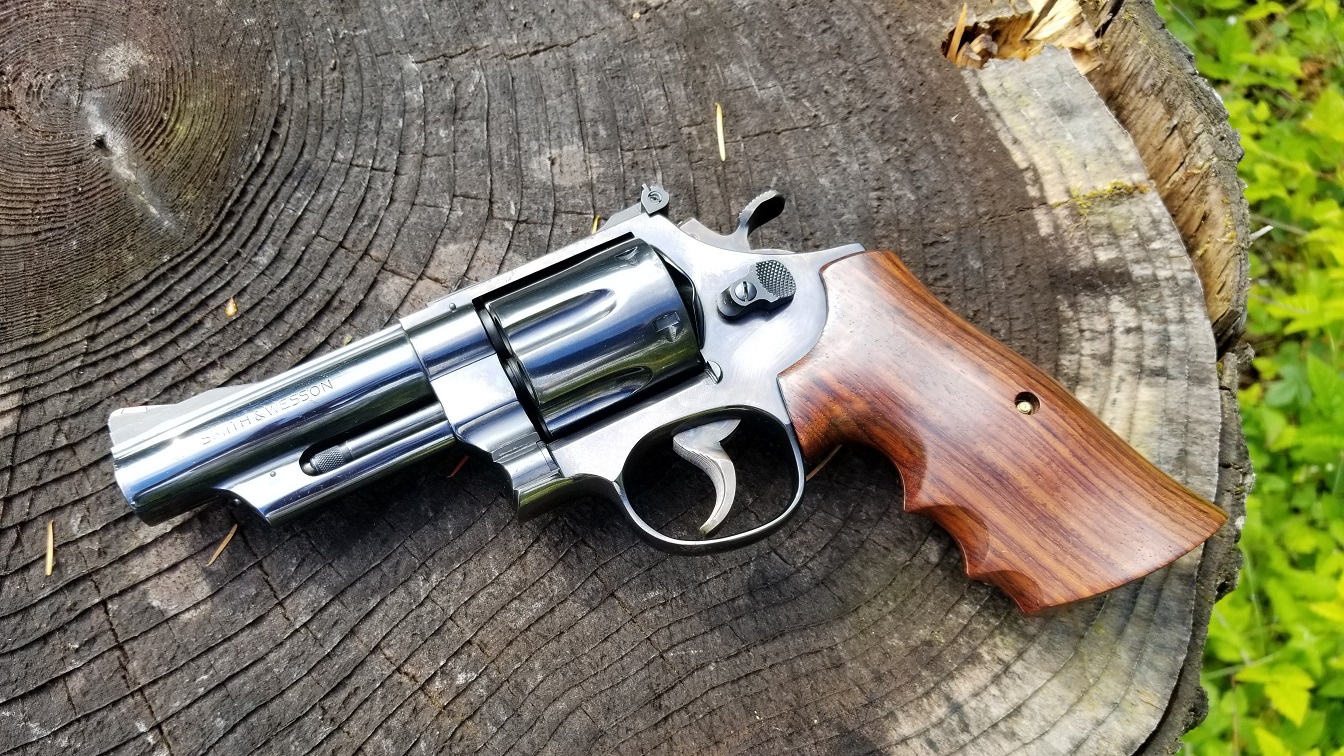“You know how family works. The oldest child gets all the best stuff, the youngest gets all the attention, and the middle kids gets stuck hanging out, usually hoping something good happens. The very same thing happened in the world of handguns.” That quote comes from gun writer David LaPell, in an April 2011 article for Guns.Com appropriately titled “THE BLACK SHEEP OF THE FAMILY: THE .41 MAGNUM.” Or, for those of you who were fans of that sitcom Malcolm in the Middle back in the 1990s, I suppose you could say the unhappy “Magnum in the Middle,” so to speak.
(Subscribe to Our YouTube Channel Here. Check out More 19FortyFive Videos Here)
Meant as a compromise between the .357 Magnum — which some experts somehow perceived as being underpowered — and the .44 Magnum – which many experts thought was too powerful for general police duty and armed private citizen self-defense work – the .41 Magnum is still with us today. The firearm has a relatively small but very loyal cult following — along with some fine guns chambered for the caliber, such as the Smith & Wesson Model 57 double-action revolver. Let’s give now give both the gun and the caliber their proper due.
.41 Magnum: Youngest Middle Child
Ironically, in the case of the .41 Magnum, this so-called “middle kid” is actually the youngest of three original members of the Magnum handgun cartridge family; the .357 Magnum dates back to 1935, the .44 Mag debuted in 1955, and the .41 “Maggie” was hatched in 1964. Interestingly, though Smith & Wesson produced the first guns in each of the three calibers, whilst the .357 and .44 Mags have Smith & Wesson as part of their full names, the .41 Magnum instead incorporates Remington as part of its full official name i.e. the .41 Remington Magnum.
Continuing with the family metaphors, all three cartridges have a common “father,” the legendary firearms guru Elmer Keith. In the case of the .41 Magnum, in particular, Mr. Keith worked with the equally legendary Bill Jordan in its development. However, the end result wasn’t quite how Messrs. Keith and Jordan originally intended. As noted in an article written earlier this year by Paul Money of Sonoran Desert Institute:
“Firearms legend-of-old Elmer Keith designed the .41 Magnum in 1964, intending it to be a police cartridge. The original loading was a 210-grain semi-wadcutter leaving a 4-inch barrel at 1150fps. It was to be fired out of a heavy, large-frame revolver, giving police officers a lower recoiling revolver that would still deliver a lot of energy. Remington also decided to offer a much hotter 210 grain soft point load that left a 4-inch barrel at 1400fps. They also decided to call the cartridge the .41 Magnum, for marketing purposes, instead of the .41 Police, as Keith had wanted … Unfortunately, it never caught on well with police departments, and the departments who did adopt it had trouble getting their officers to successfully qualify with the big revolvers.
Thus the .41 Magnum never took the spotlight from the more popular .44 Magnum and .357 Magnum cartridges.”
To compound the problem, unlike the .357 and .44 Mag revolvers, which offered the option of safely chambering and firing their lower-powered ancestors — the .38 Special and .44 Special respectively — the .41 Magnum had no .41 Special equivalent as a mainstream factory caliber to fall back on, but rather only as a wildcat cartridge.
In any event, Smith & Wesson introduced the aforementioned Model 57, which was essentially identical to the adjustable-sighted Model 29 —and is indeed categorized in the same so-called “N-frame” series as the Dirty Harry gun — and then a more “economy” version, the fixed-sight Model 58, which, to quote Mr. LaPell again, “looked like a Model 10 revolver on steroids.” Ruger would follow suit with guns of its own in the chambering, and then the Israeli Desert Eagle came along to give semiautomatic pistol fans an option in the caliber.
Personal Shooting Impressions
To give you an idea of the comparative rarity of the .41 Magnum, I’ve been shooting for 33 years, and in the process, I’ve befriended more than my fair share of fellow gun enthusiasts and visited my fair share of firing ranges across the continental U.S. Yet not a single one of the shooting buddies whom I’ve met in-person owns a .41 Mag, and not a single one of the ranges I visited had a .41 Maggie available for rental. The.45 Winchester Magnum, .454 Casull, S&W .500, .50AE, yes … but .41 Magnum, eh, no so much. So, not quite as rare as hen’s teeth, but still pretty elusive.
That said, I have my fair share of Facebook Friends — whom I haven’t yet met in person, who are quite fond of the .41 Magnum in general and the S&W M47 in particular. For example, Dave Workman, Senior Editor for the Second Amendment Foundation (SAF), shared this nugget with me: “I think the .41 Magnum is the best of the .40-caliber cartridges. It shoots flatter than a .44 with slightly less recoil. The original Model 57, with the firing pin on the hammer and no stupid internal locking device was the zenith of double-action revolvers in this caliber. Remarkably well-balanced and wonderfully accurate. I’ve shot three deer with handguns in .41 Magnum, the last with a 4-inch Model 57 and it was a moving head shot. For handloaders, the .41 Magnum offers a variety of loads for game, silhouette shooting and defense.”
But as far as being able to satiate my curiosity about the .41 Mag, going back to that whole lack of available samples from my shooting buddies and local rental ranges alike … well, as the saying goes, “If you want to do something right, do it yourself.” So, by golly, I went ahead and bought my own dadgum S&W M57, doing so in June 2019 thanks to Vienna Arsenal (an excellent source of historical surplus and/or hard-to-firearms) in Vienna, Virginia. If memory serves me right, I paid somewhere in the $1K range for the gun. This particular beauty has a barrel length of 6 inches. As I’ve mentioned in a couple of my other articles for 19FortyFive, I prefer rubber grips to wooden ones for shooting comfort and recoil control, so I replaced the factory original wood grips on my Model 57 accordingly.
In the three years that I’ve owned this revolver, I’ve probably only fired about 600 rounds through her, tops, as the ammo is also relatively hard to find, not to mention pricey. For example, the ammo I purchased for my most recent range session, a generic white box of 50 rounds of 210-grain “XTP – Hollowpoint” (presumably based upon Hornady’s XTP [Extreme Terminal Performance] line of ammo), cost me $47.70.
So then, for this range review, I took my set of hen’s teeth, er, .41 Magnum revolver and ammo, to the delightful Cindy’s Hot Shots indoor shooting facility in Glen Burnie, Maryland. Due to time and budget constraints — thanks to a long waitlist at the range, which left me 45 minutes to test-fire three different guns before closing time — I was only able to use 45 rounds for this particular live-fire session. I would’ve gone a full 50 rounds, but I generously let one of the range employees test-fire the remaining five rounds in the box.
The session was divvied into 15 rounds apiece at 21 feet, 50 feet, and 75 feet. Headshots were sought at the near and far distances, whilst center torso shots were targeted at the middle distance, using an USPSA-style target made by Baker Targets of Orlando, Florida. And despite my deteriorating eyesight, the gun definitely showed her accuracy potential.
At 21 feet — with all of those shots fired in the double-action trigger mode — all of my rounds struck the head, with seven hitting the “A” zone and the other eight straying into the “B” zone. At 50 feet — this time switching to single-action trigger mode, 13 rounds were beautifully entered in the middle of the torso’s “A” zones whilst two proverbial black sheep strayed leftward from the flock into the “C” zone. At the range’s built-in max distance of 75 feet, three of my shots missed altogether, whilst five took the “A” zone of the noggin and seven took the “B” zone.” All of the misses were my fault, not the gun’s issues.
Pros: Smooth double-action and crisp single-action trigger straight out the box, as is typical of S&W wheel guns. Reliability was also flawless, including the positive and expedient ejection of empty cases even after the cylinder got hot to the touch on account of the number of rounds fired in a compressed timeframe. Accuracy was superb. And though I prefer stainless steel to blued finishes on handguns from a maintenance standpoint — the former is far more resistant to rust, corrosion, and holster wear than the latter — the blued finish on this wheelgun is a beautiful sight to behold from an aesthetic standpoint.
Cons: Smith & Wesson’s Magnum revolvers, for all their excellent qualities, don’t have the reputation for strength and durability that the Ruger counterparts do. Also, even with the aftermarket rubber grips, the N-frame Smiths sting my hand more than the Rugers; I actually experienced less felt/perceived recoil with the Redhawk .44 Magnum than I did with the supposedly less powerful Smith .41; apparently it wasn’t just me, as my new shooting buddy — the aforementioned range staffer — observed the same phenomenon. Last but not least, in my professional opinion, the push-forward cylinder release latch of the Smiths aren’t as ergonomic as the push-button cylinder release of the Ruger wheelies.
The Verdict: Yea or Nay?
That aside, the bottom line: if you’re willing to cough up the extra money and spend the extra time trying to track down ammo, the Smith & Wesson Model 57 is a worthwhile purchase that I can recommend for handgun hunting, home defense (obviously a bit oversized for CCW work, unless you’re built like Hulk Hogan in his heyday), and big-bore target punching alike.
Bonus Photo Essay: Smith & Wesson At Its Best
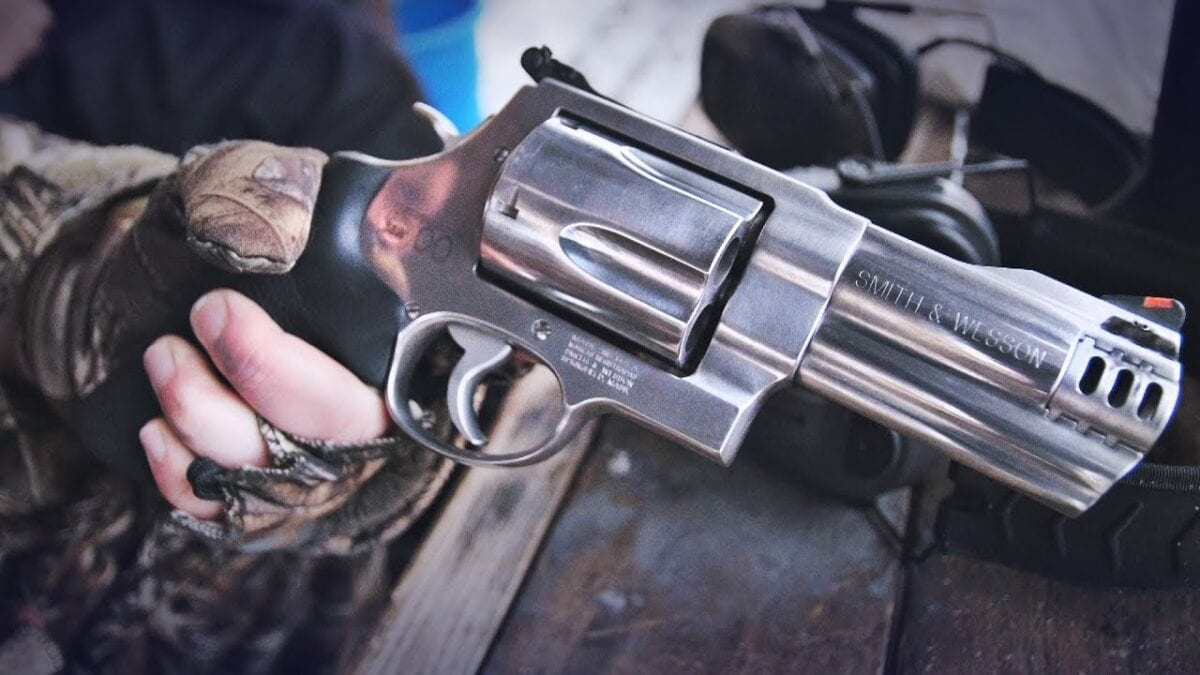
Smith & Wesson Model 500. Image Credit: Creative Commons.
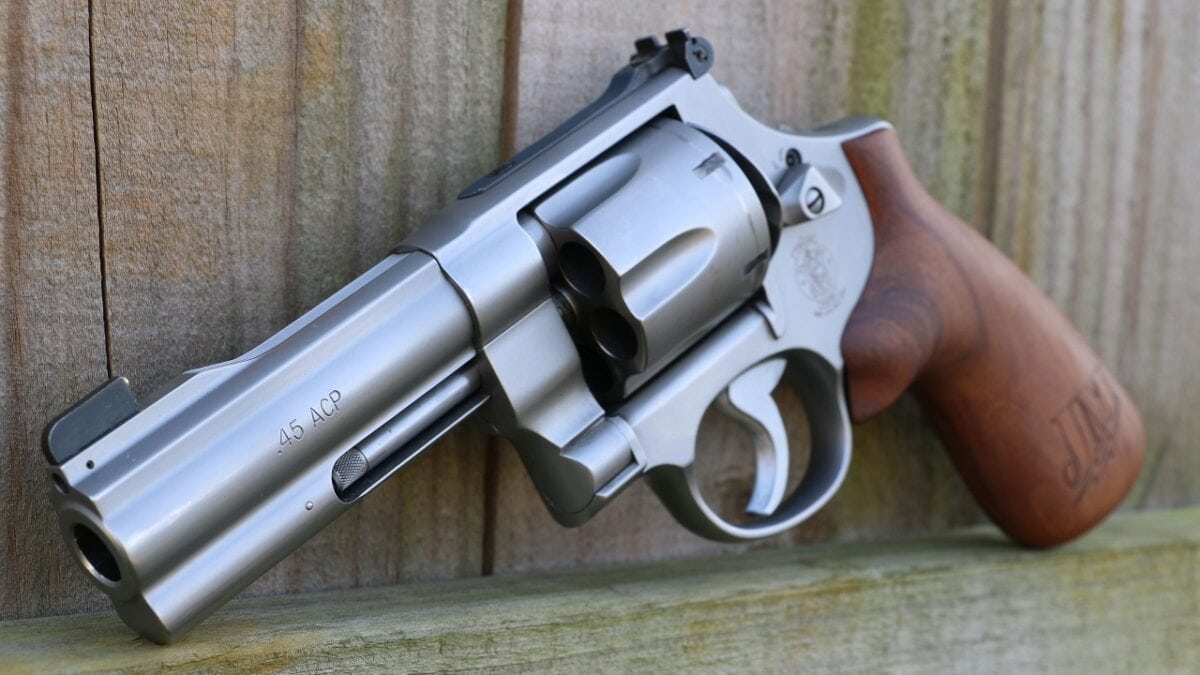
Smith & Wesson Model 625. Image Credit: Creative Commons.
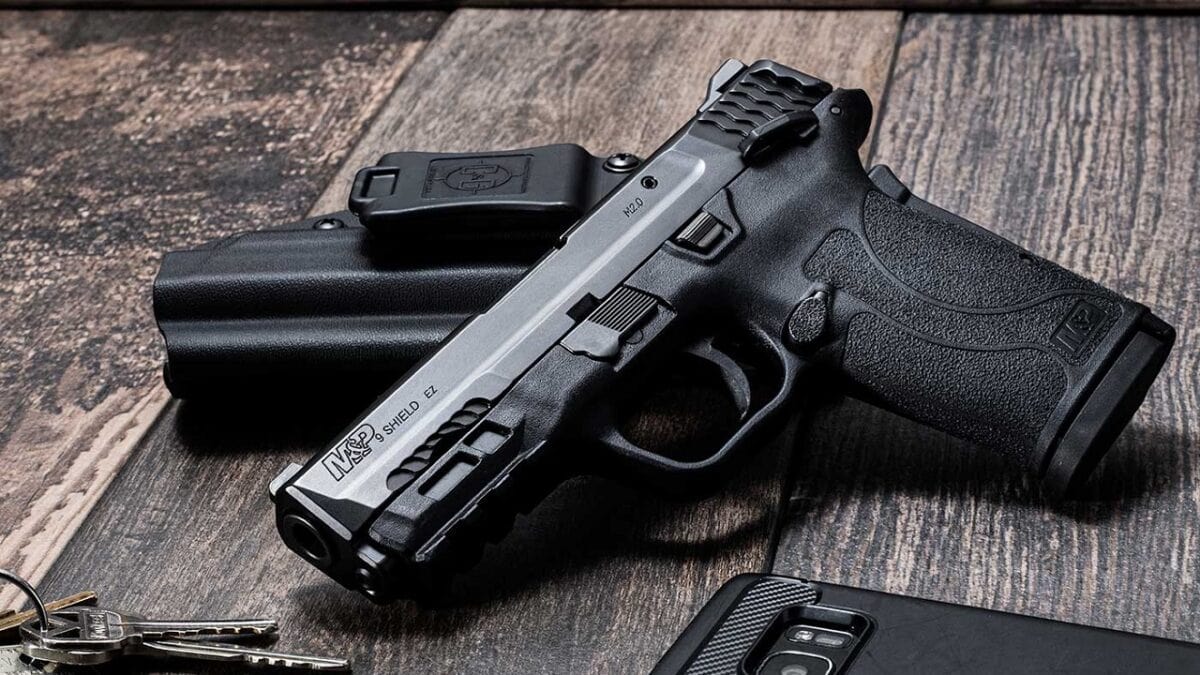
Smith & Wesson M&P Shield EZ. Image: Industry Handout.
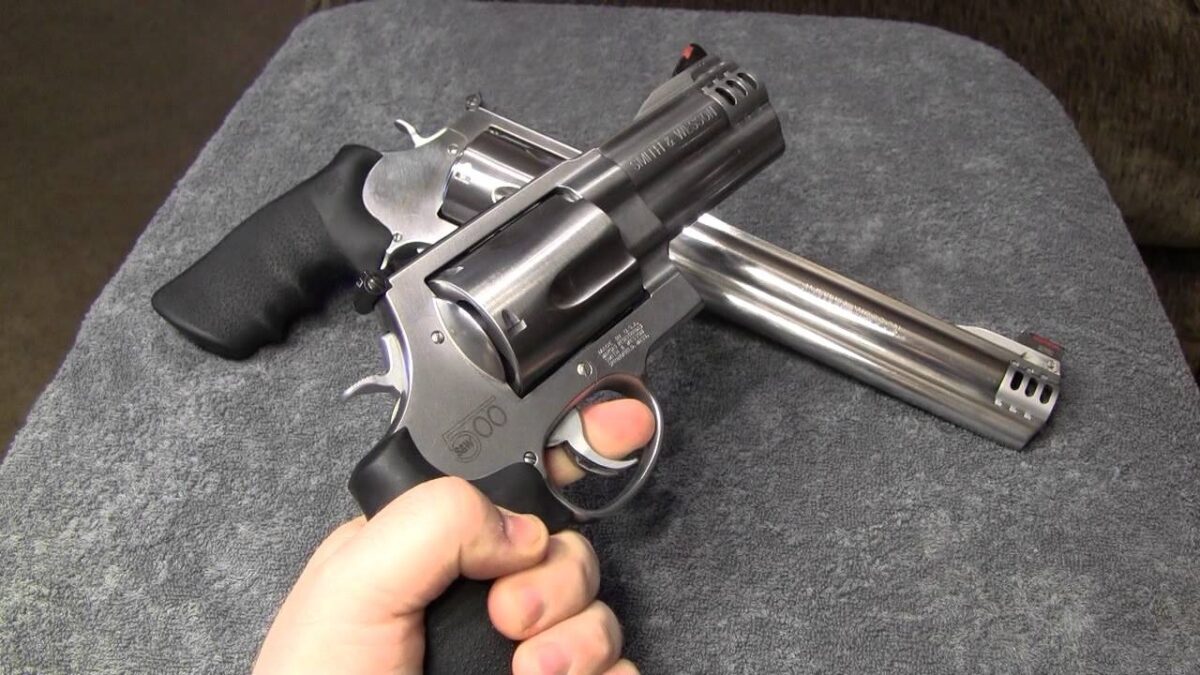
Smith & Wesson Model 500. Image Credit: Creative Commons.
Christian D. Orr has 33 years of shooting experience, starting at the tender age of 14. His marksmanship accomplishments include: the Air Force Small Arms Ribbon w/one device (for M16A2 rifle and M9 pistol); Pistol Expert Ratings from U.S. Customs & Border Protection (CBP), Immigration & Customs Enforcement (ICE), and the Federal Law Enforcement Training Center (FLETC) Criminal Investigator Training Program (CITP); multiple medals and trophies via the Glock Sport Shooting Foundation (GSSF) and the Nevada Police & Fires Games (NPAF). Chris has been an NRA Certified Basic Pistol Instructor since 2011.

